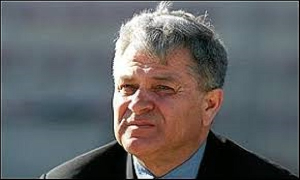Opinions of Thursday, 1 December 2016
Columnist: Kwarteng, Francis
Mahama’s “northern brothers,” Akufo-Addo’s “yen akanfuo” 4
 President John Mahama and NNP flagbearer, Nana Akufo-Addo
President John Mahama and NNP flagbearer, Nana Akufo-Addo
Francis Kwarteng
“Differences are not intended to separate, to alienate. We are different precisely in order to realize our need of one another” (Desmond Tutu).
Some remarkable misconceptions
It is insecurity, fear, narcissistic grandiosity and upbringing which drive members of certain ethnic groups to coil back into their ghettoized shells—part of the larger world of social cognition raised on an internalized platform of superiority complex—quite away from national dialogues on inter-ethnic socialization and also from the political mobilization of the creative prowess of diversity for development purposes, namely human capital management, and for internal cohesion.
Ethnic diversity offers itself as a powerful statement on the intelligential largesse of nature.
Thus, the creative potential of ethnic diversity is worth harnessing for national development.
It therefore means we must make every effort to understand its existential operational intricacies and to appreciate it for what it really is.
This has been the fundamental thrust of our arguments all along.
But, ethnicity diversity is a far more complex phenomenon than many of us think, in fact possibly beyond the capability of the human mind to understand.
Even science, perhaps one of the highest noetic states of human consciousness, does not appear to have all the answers.
Then there is that school of thought, which seeks to tendentiously conflate ethnicity and the bug of corruption in one fell swoop.
Of course when the true nature of a problem is not properly defined on the basis of boundary equations of intelligent assumptions, obviously any quest for practical, reliable or optimal solution(s) assumes a disturbing state of intractable illusion.
The lingering illusion of race and ethnicity is no different from the ignis fatuus which the so-called tachyonic particle presents in theoretical physics, say, although research conducted in the fields of pharmacogenomics, pathology and pharmacogenetics offers some interesting insights into the nagging complexities of race and ethnicity.
Man tends to objectify complex illusory ideas just to give them a reified character of simplistic representation in the finite immanence of noetic affirmation, as the process potentially brings some tentative finality to his nagging curiosity.
This is why ethnicity cannot be reduced to criminality.
Those who want to make corruption ethnic-specific are doing the nation and its people more harm than good—a great disserve to nation-building.
Public corruption has a national character which means that, in effect, it transcends the sentimental boundaries of ethnicity.
And, if we truly want to deal with the problem as effectively as we want it then we might as well look beyond ethnic fixation and focus on the bigger picture.
No one is corrupt by virtue of his race or ethnicity.
Distortions in the human condition have a lot to do with some of the causes of criminality: Environment and peer pressure, greed and materialism, lost and lack of opportunities, poverty, laziness, ethnic prejudice and racial discrimination, and so on.
An interesting fact for us at this point in human existence is that scientists, for all intents and purposes, have not discovered an ethnic gene for corruption yet.
And this presumed discovery, if it can indeed be attained, probably remains far beyond the receding future of human understanding of the complexity of nature.
Such a noble quest remains very far into the unforeseeable future—that is.
Still, we will not put this proposed query beyond the seemingly finite capability of human curiosity.
We should be extremely careful not to turn nativism into xenophobic oppression of our own citizens, for, after all, ethnic and racial purity is not absolute.
The seeming cultural conflicts between matriarchy and patriarchy for instance, provide an interesting permutation of conjugal-arrangement scenarios in which the biological product(s) of these scenarios assumes cultural definitions beyond the parochial cultural geography of what it means to be an “Akan.”
The question is:
Which ethnic group does a child produced from a conjugal arrangement in which the mother and the father come from patriarchal (Kusasi) and matriarchal (Akan) backgrounds, respectively?
What about the reverse?
From the perspective of just these two scenarios, the concept “Akan” ultimately assumes a loose or fluid definition of cultural identity in connection with a biological product(s) from such conjugal arrangements.
Finally, given that ethnicity is mostly culture-specific, one what wonders how the additional concepts of nationality, multiple citizenship, multiracial (miscegenation) and multiculturalism, etc., shape or contribute to the shifting dynamics of culture as a foundational character of ethnicity?
We should be reminded that no culture has forever remained “genetically” original or autochthonous.
As a good example, is Kwame Anthony Appiah an Akan, American or British (English)?
We shall return with Part 5, the concluding segment.
Entertainment











